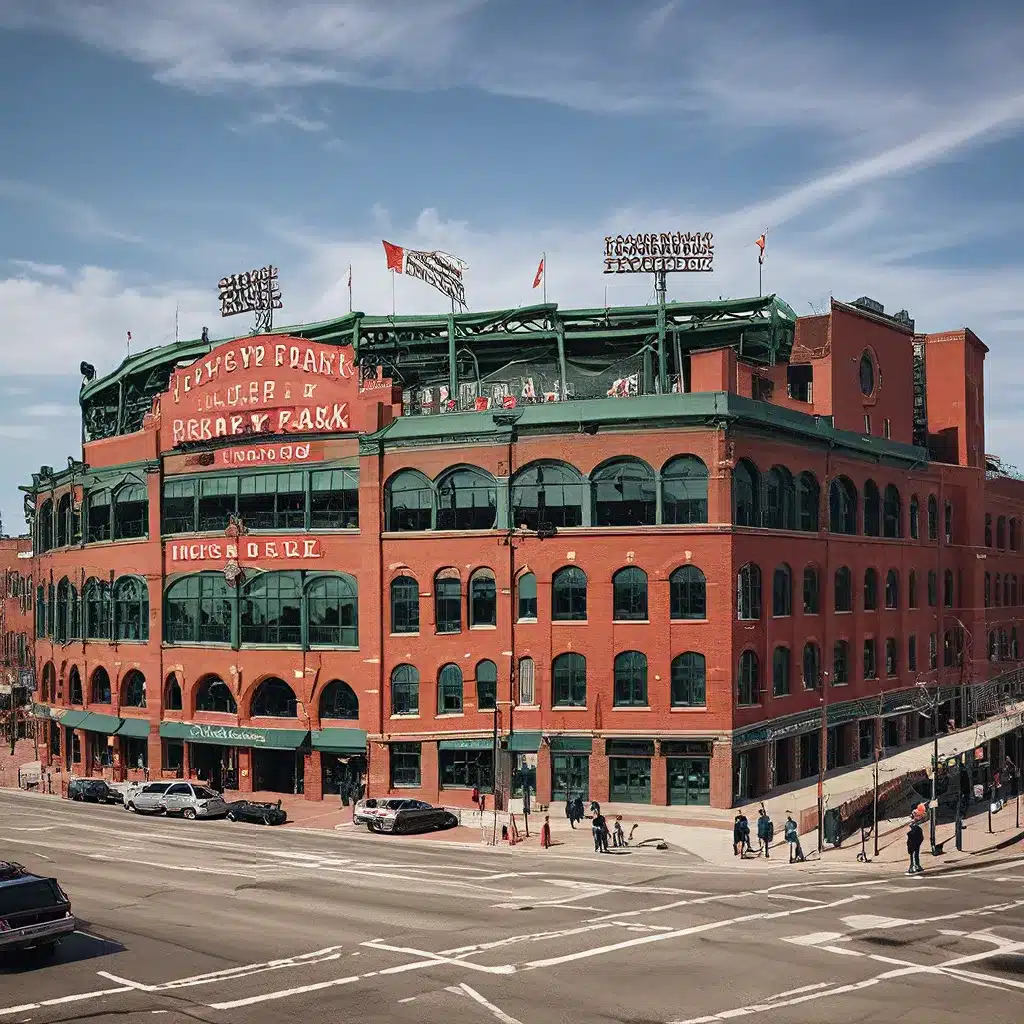
Nestled in the heart of Boston, Fenway Park has stood as a testament to the rich history and enduring spirit of America’s pastime. This iconic ballpark, the oldest in the Major League Baseball (MLB) landscape, has been a beloved landmark for generations of fans, captivating them with its idiosyncratic charm and timeless allure.
A Legacy of Perseverance
Fenway Park’s origins can be traced back to 1912, when it first opened its doors to the public. Designed by architect James McLaughlin, the ballpark made its debut just days after the sinking of the Titanic, forever etching its place in the annals of history. Over the decades, Fenway has weathered numerous challenges, from the Great Depression to the ravages of time, but through it all, it has remained a steadfast symbol of the city’s unwavering devotion to the game of baseball.
According to Ballpark Digest, Fenway Park is the oldest and one of the smallest ballparks currently in use in the MLB, with a seating capacity of 37,731. Its unique features, such as the iconic 37-foot-high Green Monster in left field and other idiosyncratic dimensions, have become synonymous with the Red Sox’s home turf, making it a true architectural marvel.
A Revitalization and Renovation Efforts
The current Red Sox ownership group, led by John Henry, Tom Werner, and Larry Lucchino, took over in 2001 and embarked on a series of renovations and additions to the historic stadium. One of the most significant changes was the addition of the Monster Seats atop the left-field wall, which increased the overall seating capacity by nearly 4,000 seats.
These renovations not only enhanced the fan experience but also preserved the essence of Fenway Park’s vintage charm. As shown in historical images, the ballpark’s exterior has undergone subtle transformations over the years, but its core identity remains firmly rooted in the architectural style and character of the early 20th century.
A Symbiotic Relationship with the City
Fenway Park’s enduring presence in Boston has fostered a deep, symbiotic relationship with the city and its residents. The ballpark’s location, nestled within the vibrant Kenmore Square neighborhood, has allowed it to become an integral part of the community, seamlessly blending with the surrounding urban landscape.
This integration has not only enriched the fan experience but also contributed to the revitalization of the local area. Fenway Park’s presence has attracted a diverse array of businesses, restaurants, and entertainment venues, transforming the neighborhood into a bustling hub of activity and contributing to the city’s overall economic and cultural vitality.
Architectural Innovations and Adaptations
Fenway Park’s architectural design has evolved over the years, adapting to the changing needs and expectations of both players and fans. From the insertion of a hand-operated scoreboard in the base of the left-field wall to the incorporation of modern amenities and facilities, the ballpark has continuously found ways to maintain its historic charm while embracing necessary advancements.
One of the most notable architectural features of Fenway Park is the Green Monster, a towering left-field wall that has become an iconic symbol of the Red Sox’s home field. This distinctive element not only adds to the ballpark’s unique character but also presents a formidable challenge for outfielders, adding an extra layer of excitement and unpredictability to the game.
Preserving the Essence of the Past
Despite the numerous renovations and adaptations, Fenway Park has remained steadfast in its commitment to preserving the essence of the past. The ballpark’s historic grandstands, vintage concession stands, and manual scoreboard serve as tangible reminders of a bygone era, transporting visitors back in time and evoking a sense of nostalgia and wonder.
This unwavering dedication to heritage has not only endeared Fenway Park to its loyal fan base but also captured the imagination of baseball enthusiasts and historians worldwide. The ballpark’s enduring legacy has made it a must-visit destination for anyone seeking to immerse themselves in the rich tapestry of the game’s history.
A Timeless Beacon of Inspiration
As the oldest ballpark in the MLB, Fenway Park stands as a timeless beacon of inspiration, a testament to the enduring power of sports and the ability of architectural marvels to transcend the boundaries of time. Its very existence serves as a reminder that the passion for the game and the connection to the past can be preserved, even in the face of relentless change and progress.
Through its unwavering commitment to preserving its unique character and heritage, Fenway Park has become more than just a baseball stadium; it has evolved into a living, breathing symbol of the city of Boston, a place where the echoes of the past and the promise of the future converge, creating an experience that is truly unparalleled.

